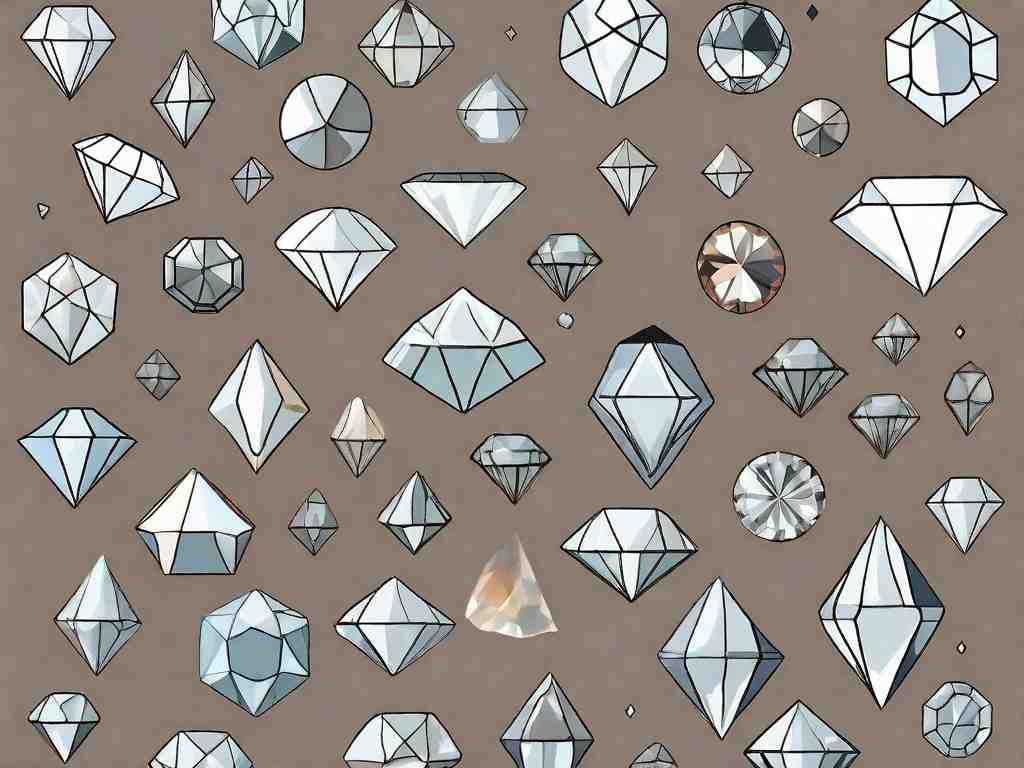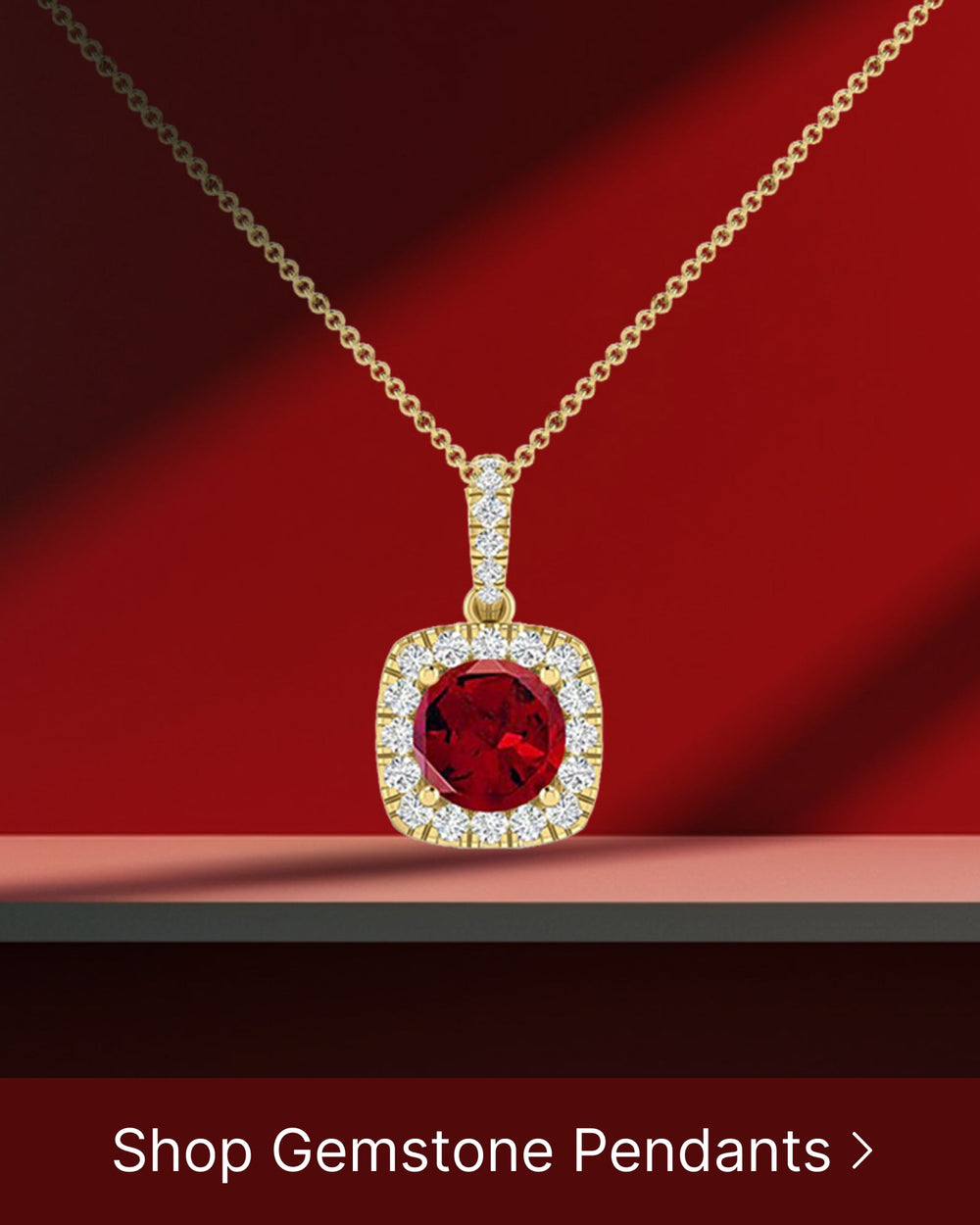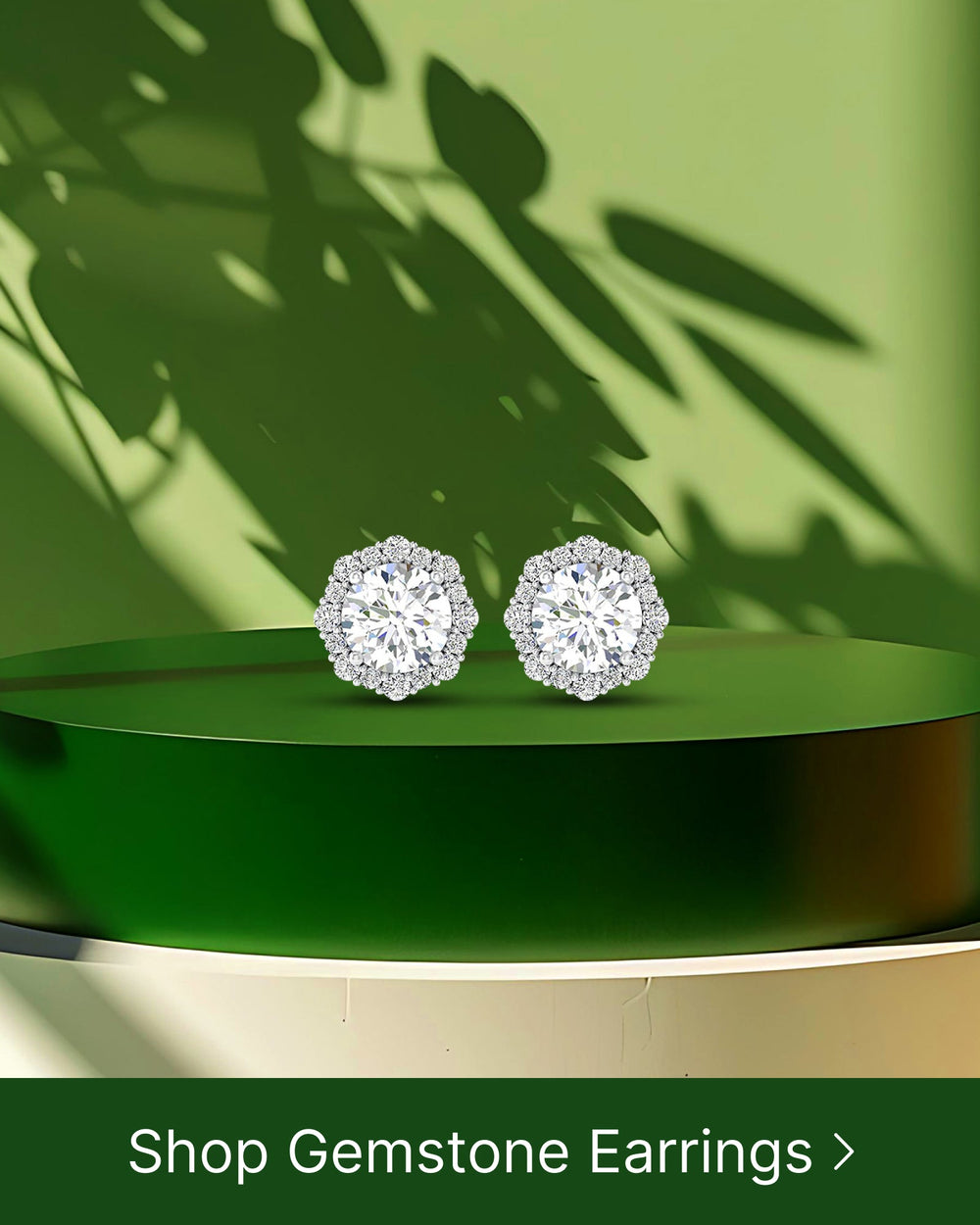Diamond inclusions are a natural part of the gemstone’s formation and play a crucial role in determining its value. In this article, we will explore the various aspects of diamond inclusions, including what they are, how they affect a diamond's value, and tips on buying diamonds with inclusions.
Defining Diamond Inclusions
Diamond inclusions are internal or external characteristics that occur during the formation process. They can be minerals, fractures, or even other diamonds trapped within the gemstone. Understanding the nature and types of these inclusions is vital in evaluating a diamond's quality.
When it comes to diamonds, perfection is highly sought after. However, it is important to note that almost all diamonds have some form of inclusion. These imperfections are what make each diamond unique, like a fingerprint. Inclusions can provide valuable insights into a diamond's history and formation process.
The Formation of Inclusions in Diamonds
During the natural growth of diamonds, various elements and conditions can lead to the formation of inclusions. Pressure, temperature, and chemical impurities all contribute to the creation of these unique features. As carbon atoms crystallize under extreme heat and pressure deep within the Earth's mantle, they may encounter other elements or experience disruptions in their growth, resulting in the formation of inclusions.
It is fascinating to think about the incredible journey that a diamond takes from its formation deep within the Earth to its discovery and transformation into a precious gemstone. The formation of inclusions is a testament to the complex geological processes that occur over millions of years.
Types of Diamond Inclusions
There are several types of diamond inclusions to be aware of. Some common examples include feathers, which are small cracks within the diamond, pinpoint inclusions, and carbon spots. Each type of inclusion has a distinct appearance and impact on the stone's overall clarity.
Feathers are one of the most common types of inclusions and can vary in size and visibility. These tiny cracks can resemble feathers, hence the name, and are often caused by stress or pressure during the diamond's formation. While feathers may affect a diamond's clarity, they can also create unique patterns and add character to the stone.
Pinpoint inclusions, as the name suggests, are tiny dots within the diamond. These inclusions are usually caused by small mineral crystals that become trapped during the diamond's growth. While they may be barely visible to the naked eye, they can affect the diamond's clarity grade.
Carbon spots are another type of inclusion that can be found in diamonds. These spots are dark areas within the stone caused by the presence of carbon impurities. While they may be seen as imperfections, some people appreciate the unique patterns and characteristics they create.
Understanding the different types of inclusions and their impact on a diamond's clarity is crucial when evaluating its quality. Jewelers and gemologists carefully examine these characteristics to determine a diamond's grade and value.
The Impact of Inclusions on Diamond Value
The presence of inclusions greatly affects a diamond's value, as they directly influence its clarity, carat weight, and overall appearance. Let's delve into how inclusions can impact a diamond's clarity, carat weight, and ultimately, its market value.
How Inclusions Affect Diamond Clarity
Diamond clarity is assessed based on the presence, visibility, and size of inclusions. Inclusions are natural imperfections that occur within a diamond during its formation deep within the Earth's crust. These imperfections can take various forms, such as tiny crystals, feathers, or even small cracks.
The fewer and less visible the inclusions, the higher the clarity grade of the diamond. Diamonds with high clarity grades are highly sought after and command premium prices in the market. On the other hand, diamonds with numerous or large inclusions may have lower clarity grades, which can significantly impact their value.
It is important to note that not all inclusions are created equal. Some inclusions may be less noticeable to the naked eye, while others may be more prominent and affect the gem's brilliance and transparency. Inclusions that are too prominent or impacting the gem's overall appearance may significantly affect its desirability and, consequently, its market value.
Inclusions and Diamond Carat Weight
Inclusions can also influence a diamond's carat weight. Carat weight refers to the size and mass of a diamond, with one carat equal to 200 milligrams. Inclusions, depending on their size and location within the diamond, may result in the weight of the diamond being slightly less than expected.
While the impact on carat weight may be minimal in most cases, it is essential to consider this factor when evaluating the overall value of the stone. A diamond with a higher carat weight is generally more valuable, assuming all other factors, such as cut, color, and clarity, are equal. Therefore, inclusions that affect the carat weight may indirectly impact the diamond's market value.
It is worth noting that some inclusions, particularly those with unique characteristics or patterns, can be considered desirable and even enhance the beauty and value of a diamond. These inclusions, known as "nature's fingerprints," can add a touch of individuality and uniqueness to a diamond, making it more appealing to certain buyers.
In conclusion, the impact of inclusions on a diamond's value is significant. Inclusions affect the diamond's clarity, carat weight, and overall appearance, all of which play a crucial role in determining its market value. While inclusions can lower a diamond's value, it is essential to consider the specific characteristics of the inclusions and their impact on the diamond's overall beauty and desirability.
Acceptable vs. Flawed Inclusions
When it comes to evaluating the quality of a diamond, there is a crucial distinction between acceptable and flawed inclusions. These tiny imperfections within the diamond can have a significant impact on its overall value and desirability. Let's delve deeper into this fascinating world of diamond inclusions.
Identifying Acceptable Inclusions
Acceptable inclusions are those that do not compromise the diamond's durability, brilliance, or beauty. These imperfections may be minuscule and not easily detectable to the naked eye. In fact, it takes the keen eye of a skilled gemologist, armed with magnification tools, to identify these inclusions and determine their acceptability.
One common type of acceptable inclusion is known as a pinpoint. As the name suggests, these are tiny dots that can be found within the diamond. They are often caused by minuscule mineral crystals that were trapped during the diamond's formation process. While these pinpoints may be visible under magnification, they are not considered detrimental to the diamond's overall appearance or structural integrity.
Another example of an acceptable inclusion is a feather. Feathers are tiny cracks or fractures within the diamond that resemble the delicate plumes of a bird. These inclusions can be caused by various factors, such as the immense pressure the diamond endured during its formation deep within the Earth. Gemologists carefully evaluate the size, location, and extent of these feathers to determine their impact on the diamond's durability.
Recognizing Flawed Inclusions
Flawed inclusions, on the other hand, are those that significantly affect the diamond's appearance and may compromise its structural integrity. Unlike acceptable inclusions, flawed inclusions are often more prominent and visible even without the aid of magnification.
One example of a flawed inclusion is a large black carbon spot. These spots are caused by the presence of carbon impurities within the diamond. When these impurities cluster together, they can create a noticeable dark spot that detracts from the diamond's clarity and overall beauty. Gemologists consider the size, number, and location of these carbon spots when assessing the diamond's quality.
Another type of flawed inclusion is a crack that extends from the surface of the diamond into its interior. These cracks, known as cleavages, can weaken the diamond's structure and make it more prone to breakage. Cleavages are often the result of external forces or extreme pressure that the diamond experienced during its formation or subsequent handling.
It is important to note that flawed inclusions can have a significant impact on a diamond's value and desirability. The presence of these noticeable imperfections can lower the overall clarity grade of the diamond, making it less sought after by collectors and consumers alike.
In conclusion, understanding the difference between acceptable and flawed inclusions is crucial when evaluating the quality of a diamond. Gemologists play a vital role in identifying and assessing these imperfections, allowing consumers to make informed decisions when purchasing a diamond. So, the next time you admire a dazzling diamond, take a moment to appreciate the intricate world of inclusions that lies within.
The Role of Diamond Grading in Evaluating Inclusions
Diamond grading is essential in understanding a diamond's quality and value, particularly when it comes to inclusions.
Understanding Diamond Grading Scales
The GIA (Gemological Institute of America) provides a universally recognized grading scale for diamonds. This scale assesses various factors, including clarity and inclusions, to assign a specific grade to each stone. Familiarizing oneself with this scale is crucial in evaluating a diamond's quality.
The Grading Process and Inclusions
During the grading process, gemologists carefully examine diamonds under magnification to identify and assess the presence and impact of inclusions. This evaluation contributes to the final grade and helps determine the diamond's overall value.
Tips for Buying Diamonds with Inclusions
Buying diamonds with inclusions can be a cost-effective way to still acquire a beautiful gemstone. Here are some useful tips to keep in mind when considering such a purchase.
Balancing Inclusions and Budget
When buying diamonds with inclusions, it is important to find a balance between the number and visibility of inclusions and your budget. Opting for stones with less visible inclusions or ones that are not easily noticeable can offer substantial savings without compromising beauty.
When to Consider Diamonds with Visible Inclusions
While visible inclusions may seem undesirable, they can be an excellent choice for those who appreciate unique and distinctive gemstones. Some inclusions even have their own beauty and charm, creating a one-of-a-kind character in the stone. Assess your personal preferences and find the perfect balance for your needs.
In conclusion, diamond inclusions are a natural part of the gemstone's formation and can greatly impact a diamond's value. Understanding the different types of inclusions, evaluating their acceptability, and considering the grading process are essential steps when buying diamonds. By balancing inclusions and budget, you can find a diamond that meets both your aesthetic preferences and financial considerations. Remember, the beauty of a diamond lies not just in its perfection but also in its uniqueness.






